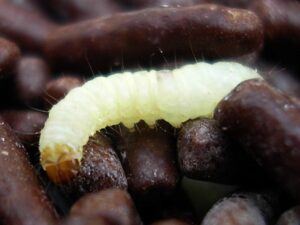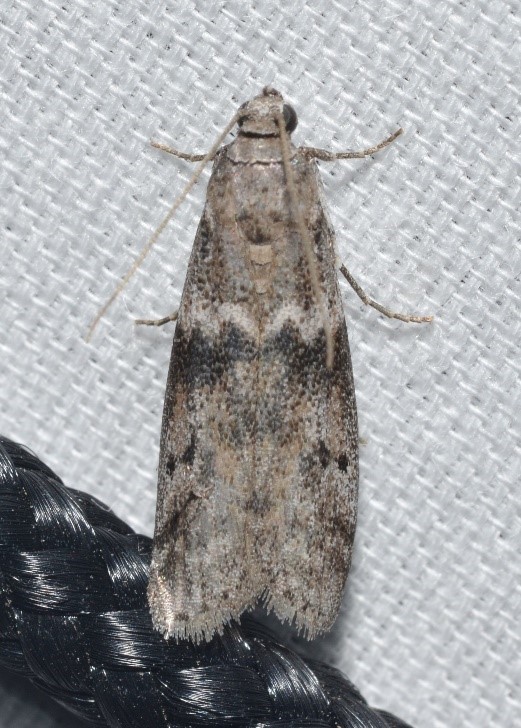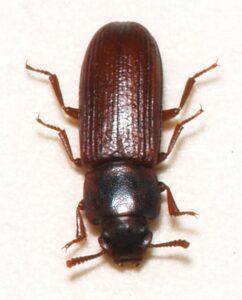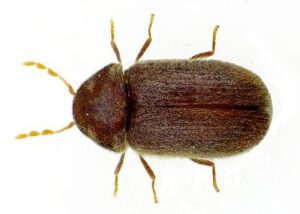-
-
-
- Indianmeal Moth
General Description
- The adult is 7-10 mm long, the basal third of the forewings are gray and the remaining section is reddish-copper. Hind wings are gray with dense pubescence.
- The larva is 10-17 mm long, white (yellowish-greenish-reddish), pinkish-white, and has brown spots on its body.
- The pupa is brown and 11 mm long.
 Credit: Mvuijlst
Credit: Mvuijlst Credit: Pudding4brains
Credit: Pudding4brainsLife Cycle and Common Characteristics
- The larva overwinters inside the stored products.
- Females lay eggs (350 eggs in total) in groups on stored products or beside food.
- The eggs hatch after a few days, and the egg incubation for 3-12 days.
- The larva needs 4-6 weeks to complete its development in the summer and 20 weeks during the winter.
- The fully developed larva weaves a silken cocoon, which turns into pupae inside.
- The pupa phase is 26 days (16°C) or 4 days (31°C).
- The generation period is 3-7 weeks in warm regions.
- The larvae of the last generation, at the end of autumn, hibernate.
- There are 6-7 generations per year.
Damage and Economic Implications
- The larva feeds on the stored materials (flour, yellow corn, dried fruits, biscuits, chocolate, dried milk dates) and secretes silky threads surrounded by the materials it fed on.
- The larva pollutes the feeding site with feces and renders the materials unsuitable for consumption.
Life Cycle and Common Characteristics
- The larva overwinters inside the stored products.
- Females lay eggs (350 eggs in total) in groups on stored products or beside food.
- The eggs hatch after a few days, and the egg incubation for 3-12 days.
- The larva needs 4-6 weeks to complete its development in the summer and 20 weeks during the winter.
- The fully developed larva weaves a silken cocoon, which turns into pupae inside.
- The pupa phase is 26 days (16°C) or 4 days (31°C).
- The generation period is 3-7 weeks in warm regions.
- The larvae of the last generation, at the end of autumn, hibernate.
- There are 6-7 generations per year.
Damage and Economic Implications
- The larva feeds on the stored materials (flour, yellow corn, dried fruits, biscuits, chocolate, dried milk dates) and secretes silky threads surrounded by the materials it fed on.
- The larva pollutes the feeding site with feces and renders the materials unsuitable for consumption.
-
-



